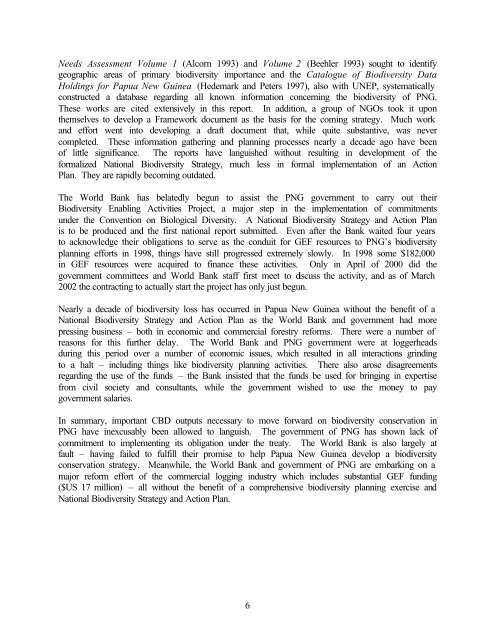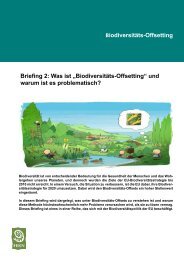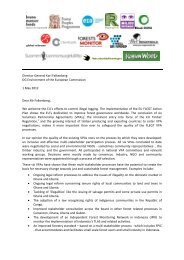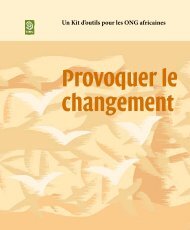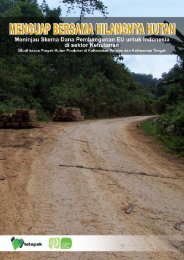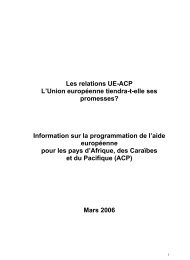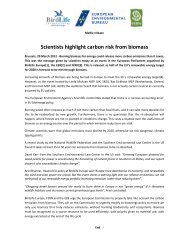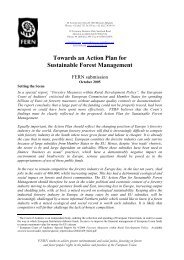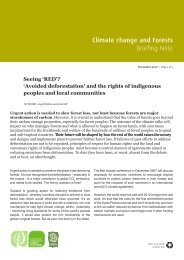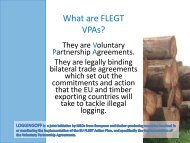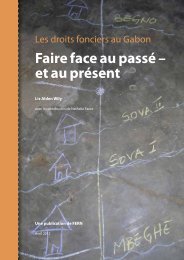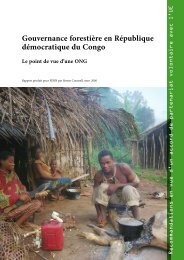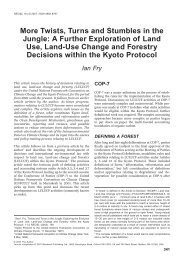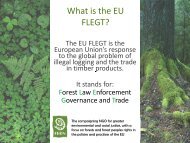Papua New Guinea - Fern
Papua New Guinea - Fern
Papua New Guinea - Fern
You also want an ePaper? Increase the reach of your titles
YUMPU automatically turns print PDFs into web optimized ePapers that Google loves.
Needs Assessment Volume 1 (Alcorn 1993) and Volume 2 (Beehler 1993) sought to identify<br />
geographic areas of primary biodiversity importance and the Catalogue of Biodiversity Data<br />
Holdings for <strong>Papua</strong> <strong>New</strong> <strong>Guinea</strong> (Hedemark and Peters 1997), also with UNEP, systematically<br />
constructed a database regarding all known information concerning the biodiversity of PNG.<br />
These works are cited extensively in this report. In addition, a group of NGOs took it upon<br />
themselves to develop a Framework document as the basis for the coming strategy. Much work<br />
and effort went into developing a draft document that, while quite substantive, was never<br />
completed. These information gathering and planning processes nearly a decade ago have been<br />
of little significance. The reports have languished without resulting in development of the<br />
formalized National Biodiversity Strategy, much less in formal implementation of an Action<br />
Plan. They are rapidly becoming outdated.<br />
The World Bank has belatedly begun to assist the PNG government to carry out their<br />
Biodiversity Enabling Activities Project, a major step in the implementation of commitments<br />
under the Convention on Biological Diversity. A National Biodiversity Strategy and Action Plan<br />
is to be produced and the first national report submitted. Even after the Bank waited four years<br />
to acknowledge their obligations to serve as the conduit for GEF resources to PNG’s biodiversity<br />
planning efforts in 1998, things have still progressed extremely slowly. In 1998 some $182,000<br />
in GEF resources were acquired to finance these activities. Only in April of 2000 did the<br />
government committees and World Bank staff first meet to discuss the activity, and as of March<br />
2002 the contracting to actually start the project has only just begun.<br />
Nearly a decade of biodiversity loss has occurred in <strong>Papua</strong> <strong>New</strong> <strong>Guinea</strong> without the benefit of a<br />
National Biodiversity Strategy and Action Plan as the World Bank and government had more<br />
pressing business – both in economic and commercial forestry reforms. There were a number of<br />
reasons for this further delay. The World Bank and PNG government were at loggerheads<br />
during this period over a number of economic issues, which resulted in all interactions grinding<br />
to a halt – including things like biodiversity planning activities. There also arose disagreements<br />
regarding the use of the funds – the Bank insisted that the funds be used for bringing in expertise<br />
from civil society and consultants, while the government wished to use the money to pay<br />
government salaries.<br />
In summary, important CBD outputs necessary to move forward on biodiversity conservation in<br />
PNG have inexcusably been allowed to languish. The government of PNG has shown lack of<br />
commitment to implementing its obligation under the treaty. The World Bank is also largely at<br />
fault – having failed to fulfill their promise to help <strong>Papua</strong> <strong>New</strong> <strong>Guinea</strong> develop a biodiversity<br />
conservation strategy. Meanwhile, the World Bank and government of PNG are embarking on a<br />
major reform effort of the commercial logging industry which includes substantial GEF funding<br />
($US 17 million) – all without the benefit of a comprehensive biodiversity planning exercise and<br />
National Biodiversity Strategy and Action Plan.<br />
6


